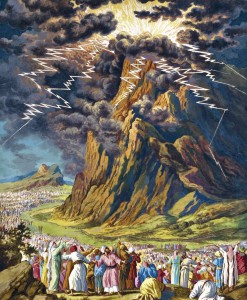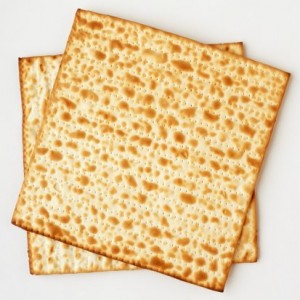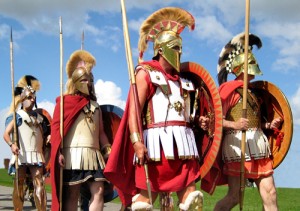Click here for a printable PDF of this article.
It has been one year and one month since the exodus from Egypt. The Jewish people, divided by tribe into clusters  around a central point, have just completed erecting the Tabernacle as the nucleus of the encampment. Each tribe is now assigned a flag that highlights that tribe’s unique abilities and strengths.
around a central point, have just completed erecting the Tabernacle as the nucleus of the encampment. Each tribe is now assigned a flag that highlights that tribe’s unique abilities and strengths.
The timing of the designation of the flags begs a question. Why did God wait until now to instruct the various tribes to carry flags? The Jews had been separated and organized by tribe as soon as they left Egypt, over a year ago. It would seem fitting for them to display their tribal flags from the very start! Continue reading Parshat Bamidbar | Shavuot – Unity Despite Individuality
 chametz, the antithesis of matzah, for all eight days of Passover. What do matzah and chametz symbolize, and why are they so central to our celebration of Passover?
chametz, the antithesis of matzah, for all eight days of Passover. What do matzah and chametz symbolize, and why are they so central to our celebration of Passover? There have been many comparisons drawn between the Purim story that we are in the midst of celebrating and the historical events that are currently playing out on the world stage. In the Purim story, the Jewish nation was faced with an existential threat emanating from the ancient Persian Empire. Today, the Jewish nation is once more facing an existential threat from the modern day Persian Empire, Iran, this time in the form of potential nuclear weapons. In the Purim story, a Jewish leader, Esther, accepted upon herself to break protocol and appear before the King, unsummoned, in order to plead on behalf of her people. Today, a Jewish leader, Benjamin Netanyahu, broke protocol and appeared in the chambers of the US Congress to plead on behalf of his people.
There have been many comparisons drawn between the Purim story that we are in the midst of celebrating and the historical events that are currently playing out on the world stage. In the Purim story, the Jewish nation was faced with an existential threat emanating from the ancient Persian Empire. Today, the Jewish nation is once more facing an existential threat from the modern day Persian Empire, Iran, this time in the form of potential nuclear weapons. In the Purim story, a Jewish leader, Esther, accepted upon herself to break protocol and appear before the King, unsummoned, in order to plead on behalf of her people. Today, a Jewish leader, Benjamin Netanyahu, broke protocol and appeared in the chambers of the US Congress to plead on behalf of his people. The Greeks enacted a number of decrees in order to prevent the Jews from practicing Judaism and to encourage them to accept their hedonistic perspective. According to the Midrash, one unusual edict required all Jews to inscribe on the horn of an ox the words, “I renounce my relationship with the God of Israel.” The Midrash explains that this law in particular “darkened the eyes of the Jewish people”.
The Greeks enacted a number of decrees in order to prevent the Jews from practicing Judaism and to encourage them to accept their hedonistic perspective. According to the Midrash, one unusual edict required all Jews to inscribe on the horn of an ox the words, “I renounce my relationship with the God of Israel.” The Midrash explains that this law in particular “darkened the eyes of the Jewish people”. The Greeks outlawed keeping Shabbos. They forbade Brit Milah. They wouldn’t allow the Jews to study the Torah. Yet this requirement to write that they have no connection to the God of Israel is what finally “got to” the Jews. Why did they find this particular edict to be so unbearably harsh, so much more than the others? Surely the other decrees were far more severe and really struck at the core of Judaism more than this one.
The Greeks outlawed keeping Shabbos. They forbade Brit Milah. They wouldn’t allow the Jews to study the Torah. Yet this requirement to write that they have no connection to the God of Israel is what finally “got to” the Jews. Why did they find this particular edict to be so unbearably harsh, so much more than the others? Surely the other decrees were far more severe and really struck at the core of Judaism more than this one.